Warrior II (Virabhadrasana II) (veer-uh-buh-DRAHS-uh-nuh too) — is a standing yoga pose that strengthen the legs and arms, opens the chest and shoulders, tones the abdomen.
Warrior II (Virabhadrasana II) develops concentration, balance, and grassroots. This mudra improves circulation and respiration and activates the whole body.
Information
| Known as: | Warrior II, Virabhadrasana 2 |
| Sanskrit Name: | वीरभद्रासन २ |
| IAST: | Vīrabhadrāsana 2 |
| Pronunciation: | veer-uh-buh-DRAHS-uh-nuh too |
| Type: | Standing pose |
| Level: | Intermediate |
| Total time: | 30 seconds to 1 minute or more |
| Focus: | Ankle, leg, arms, shoulders |
| Drishti: | Over fingertips of forward extended hand |
| Chakra: | Muladhara (Root Chakra), Manipura (Solar Plexus Chakra), Anahata (Heart Chakra), Vishuddha (Throat Chakra) |
| Indications: | Leg, ankle, thorax, Inguinal region, lung, shoulder |
| Counterposes: | Downward-Facing Dog (Adho Mukha Svanasana) |
| Preparatory poses: | Alanasana, Parighasana, Utkata konasana |
| Follow-up poses: | Utthita parsvakonasana, Viparita Virabhadrasana, Trikonasana |
| Contraindications: | Knee injuries, hip injuries, high blood pressure or low blood pressure, neck injuries, vertigo or dizziness |
Meaning
The word “Virabhadrasana” is derived from Sanskrit and is composed of three words – Vira + Bhadra + Asana:
- “Vira” = “hero”
- “Bhadra” = “friend” or “auspicious”
- “Asana” = “pose”.
The Science and Mythology Behind
This asana is closely associated with history and mythology.
Virabhadra = fierce warrior, incarnation of Shiva
It is said that King Daksha performed an important ritual yajna but refused to invite his daughter Sati and her husband, Shiva. Sati was humiliated and insulted, so she entered the assembly and went straight into the fire.
Shiva is devastated upon hearing about Sati’s death. He took out a lock of his hair and slammed it to the ground. The lock of beaten hair turned into a powerful warrior. Shiva named this Virabhadra (Warrior), and ordered him to destroy Daksha and his guests.
This pose, Warrior Pose II, occurs when he targets Daksha.
The pose is said to represent the strong and fearless nature of Virabhadra, embodying the qualities of a hero who is both powerful and compassionate. The pose requires strength, balance, and focus, and is often associated with the idea of overcoming obstacles and challenges with courage and determination.
The Virabhadrasana II requires both strength and stability. This requires complete flexibility of the upper body as well as hips. Virabhadrasana balances both the Sathira (stability) and the Pleasure (spontaneity) of the body.
The whole body is involved in this asana and also makes us aware of those organs which are out of sight. In this asana, awareness is raised by raising the backhand and keeping the back foot on the ground.
Benefits of Warrior II (Virabhadrasana II)
Warrior II pose can be an effective way to build a sense of inner strength and power. As you practice this posture regularly, you will increase your ability to face daily battles with ease and grace.
Physical Benefits
- Strengthens the arches, ankles, knees, and thighs
- Stretches the hips and shoulders
- Broadens the chest
- Increases lung capacity
- Stimulates digestion and circulation
- Enhances muscular endurance
- Lengthens the spine
Mental Benefits
- Builds focus
- Develops willpower
- Stimulates the mind
Step-by-step Instructions of Warrior II (Virabhadrasana II)
Step 1
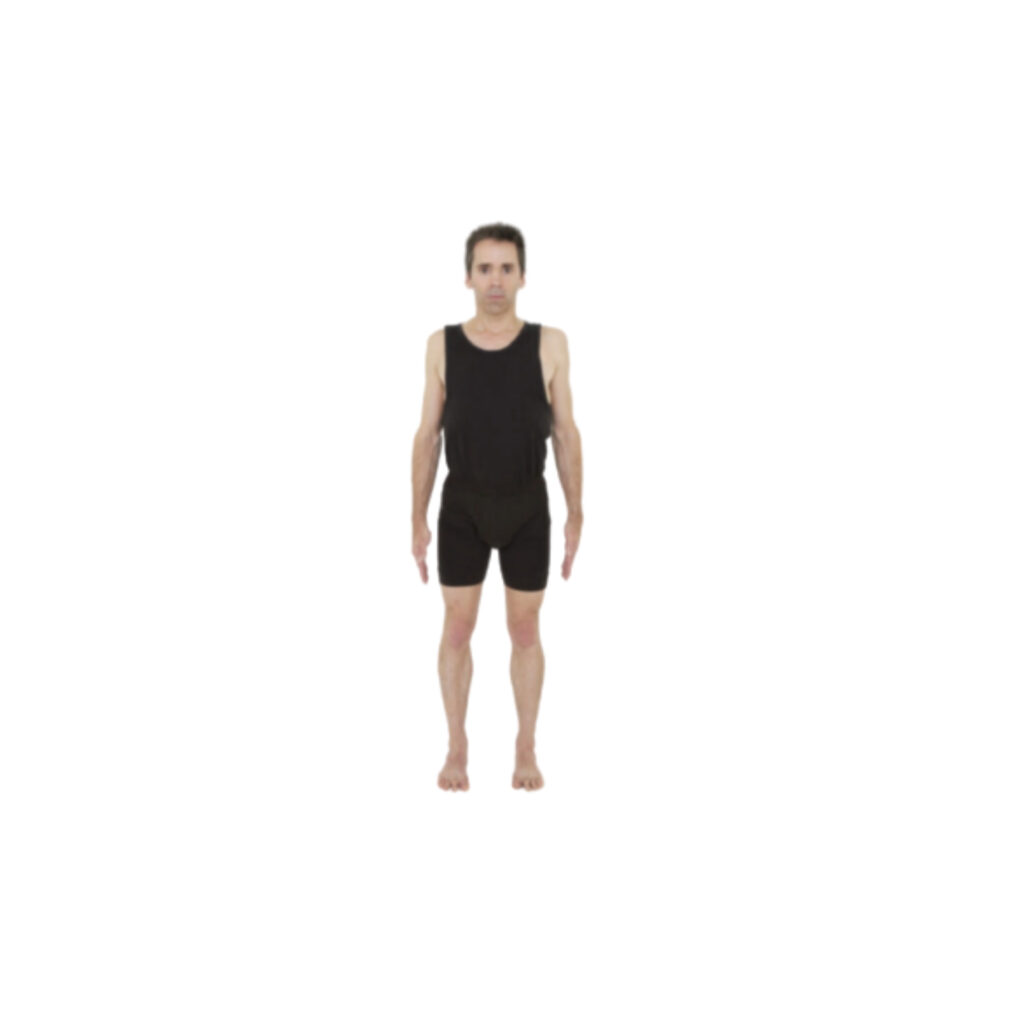
Start at the Mountain pose (Tadasana), stand with your feet hip-distance apart and keep your arms at your sides. Let it be distracted. Pay attention to the quality of your breath. Draw your awareness inward to the center of your body.
Step 2
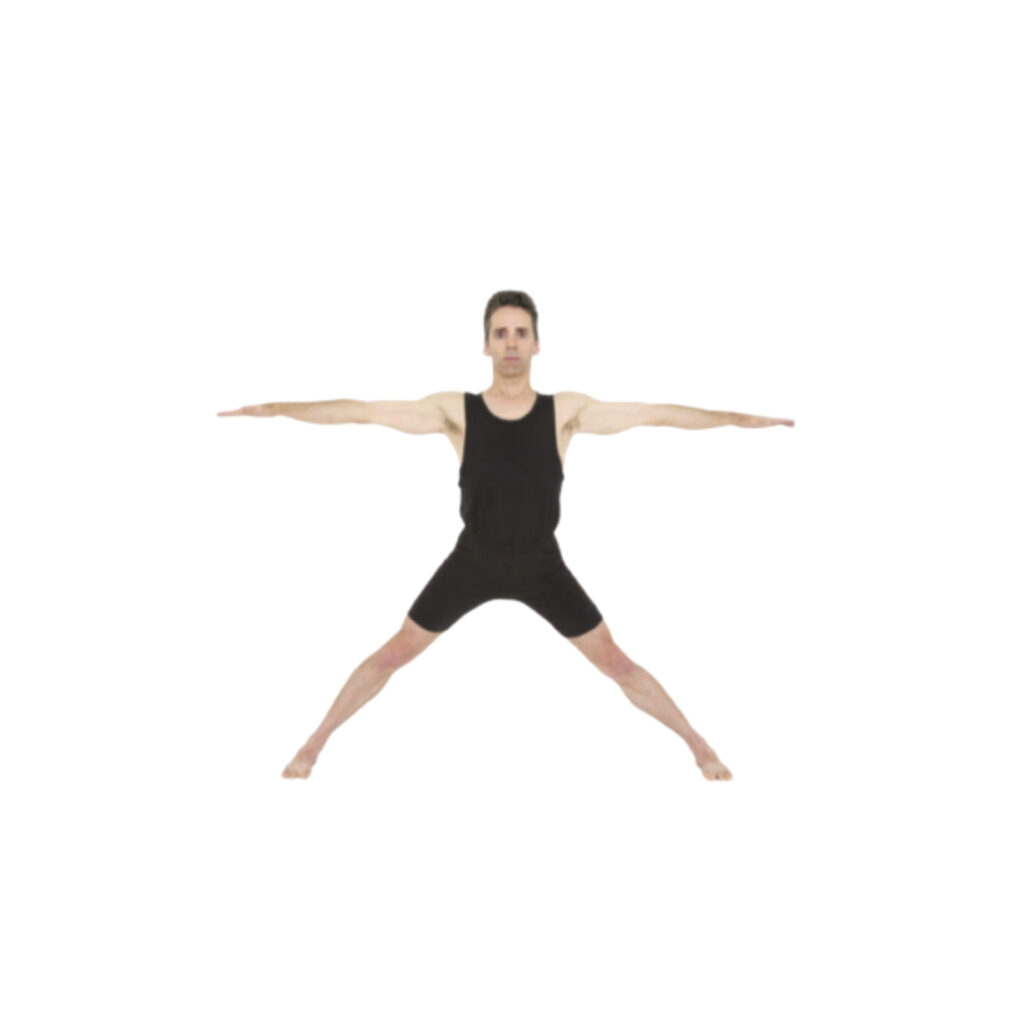
Exhale, as you widen your feet, about 4-5 feet. Inhale and spread your arms outward. Check to make sure your heels are aligned with each other.
Step 3

Turn your left foot in slightly; turn your right leg out directly to the side.
- Align right heel with the arch of your left foot.
- Engage your leg muscles to the bone and draw the muscles from the floor up into your pelvis.
Step 4
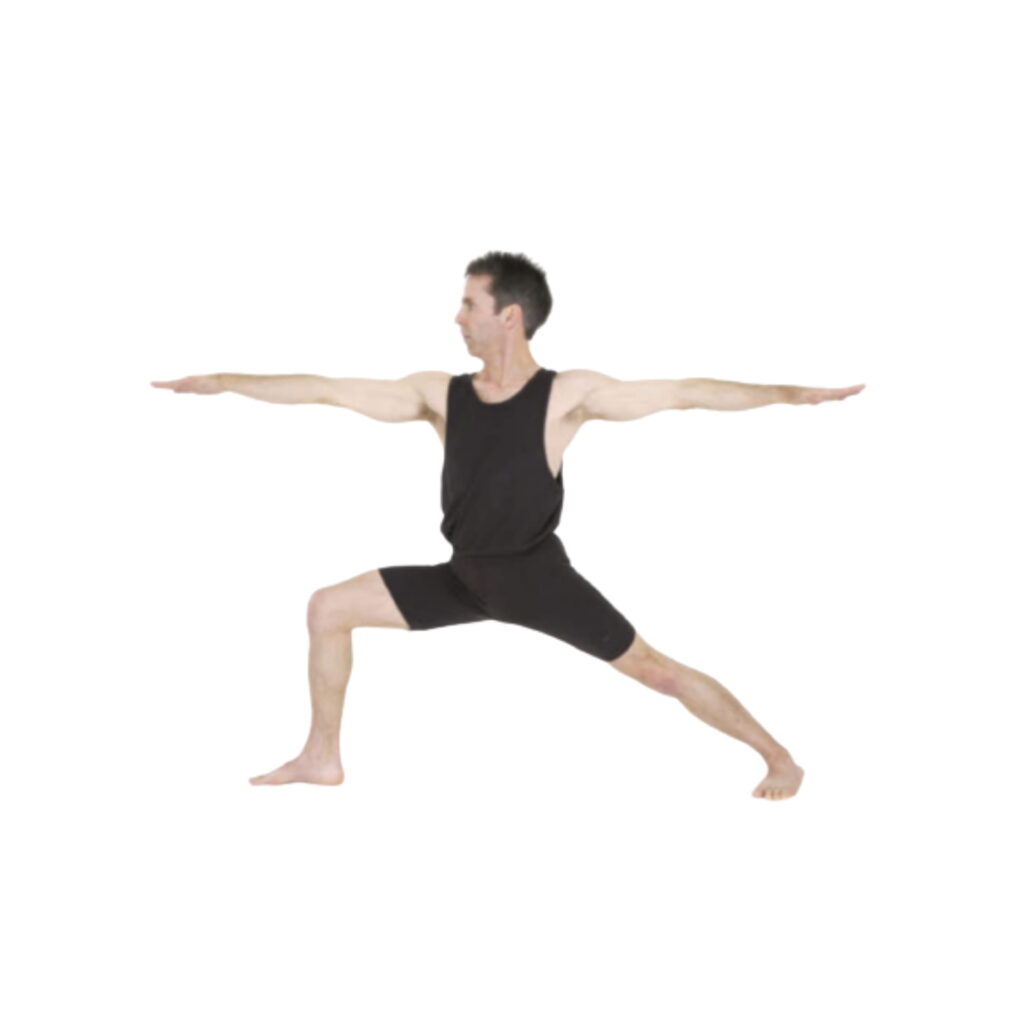
Keeping your legs engaged, exhale and bend your right knee to 90 degrees. Hold for several breaths. To release, pull your legs toward each other to engage the muscles, inhale, and come out of the pose. Repeat on the other side.
- Keep the top of your left thigh back and lifting away from the floor.
- Right thigh is parallel to the floor.
- Keep your torso vertical.
Precautions and contraindications
Under the supervision of a certified yoga instructor or after consulting your physician, it is best to practice Warrior 2 (Virabhadrasana II), especially if you have had a spinal disorder in the past or if you have just recovered from a chronic illness.
While this yoga pose is generally considered a safe and beneficial yoga pose for most people, there are some precautions and contraindications to keep in mind to avoid injury or discomfort. These are some things that you should be careful about when you perform Warrior 2 (Virabhadrasana II):
- Knee injuries: If you have a knee injury or condition, such as a sprain or strain, arthritis, or a meniscus tear, you may need to modify the pose to avoid aggravating the injury. This could include reducing the depth of the knee bend, or using a prop such as a block or bolster to support the knee.
- Hip injuries: If you have a hip injury or condition, such as hip bursitis or a labral tear, you may need to modify the pose to avoid putting excessive strain on the hip joint. This could include reducing the depth of the hip bend, or using a prop such as a block or bolster to support the hip.
- High or low blood pressure: If you have high blood pressure or low blood pressure, you may need to modify the pose to avoid any sudden changes in blood pressure that can occur when moving from a standing position to a forward bend. This could include moving slowly and mindfully, and avoiding any sudden movements.
- Neck injuries: If you have a neck injury or condition, such as a herniated disc or whiplash, you may need to modify the pose to avoid putting excessive strain on the neck. This could include keeping the gaze forward or down, rather than turning the head to look up.
- Balance issues: If you have balance issues, such as vertigo or dizziness, you may need to modify the pose to avoid losing your balance or falling. This could include using a wall or chair for support, or reducing the depth of the hip bend.
Modification and variation of Warrior II (Virabhadrasana II)
Beginner pose
Here’s a little tip for beginners. When you bend the left knee at a right angle, as you come in the pose, bend it rapidly, leaving a deep breath, and keep the inside of the left knee towards the short leg of the left foot.
Advanced Pose
These are the two changes that will help you intensify posture after originally mastered.
To increase the stretch in the torso, tilt the torso slightly away from the side of the leg, and tilt your arms parallel to the line of the top of your shoulders.
To increase the length and strength of your arms in this pose, bend both the creases of your palms and your inner elbows in such a way that they face the ceiling. As you do this, push the shoulder blades backwards. Then, as you maintain the rotation of the arms, bend your palms so that they face the floor again.
Preparatory poses before Warrior II (Virabhadrasana II)
- Alanasana
- Parighasana
- Utkata konasana
1. Alanasana
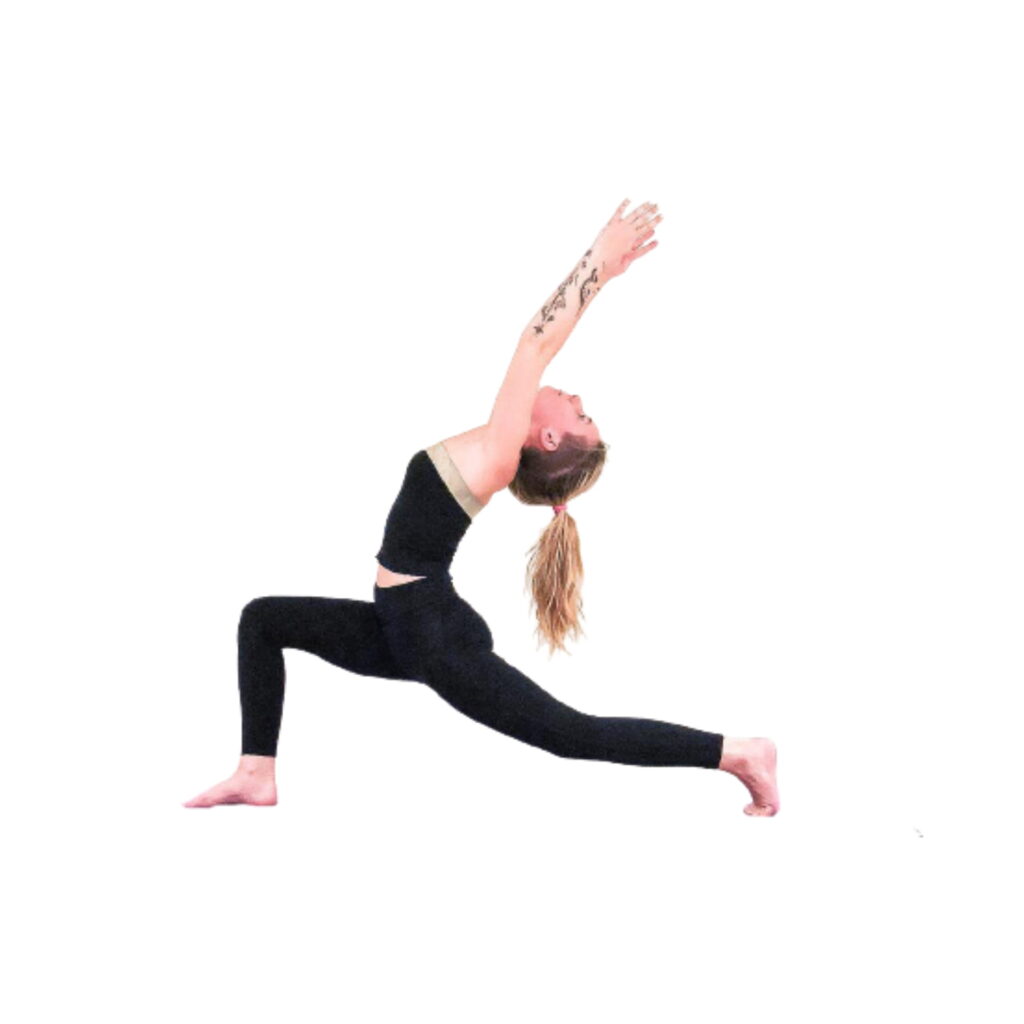
- Start from Mountain Pose (Tadasana).
- Inhale properly and raise both your hands towards the sky and try to lengthen your spine.
- When you start exhaling, at the same time move your left foot at least 4-5 feet and try to bend your left knee properly.
- Now hands, palms facing each other, reach up towards the sky. Now just keep your shoulders down and away from your ears.
- Place the shoulders just above the hips.
- Now open your chest comfortably and try to press it towards the sky.
- Push your back and right heel backwards behind the right knee.
- If you think to come out of the posture, just step forward.
2. Parighasana

- Bend down, face the long edge of your mat. Extend your left leg outward and rotate the leg externally so that your heel is on the mat pointing to your knees and toes (flexible of the foot).
- Gently press your right hip forward and open your arms parallel to the floor, palms upward. Inhale, lengthen the side waist and exhale, keeping the left hand down, bring the body down with the left leg. Ground with right knee.
- While you inhale, raise your right arm up and to the left, still pushing your right hip forward, bending your ribs and rotating your rib towards the ceiling. Look up, under the right arm or in front of you.
- Hold for 5 to 10 breaths.
- To come out, extend through the top arm and return to the center as you inhale.
- Bring the knees back next to each other and repeat on the other side.
3. Utkata konasana (Goddess Pose)
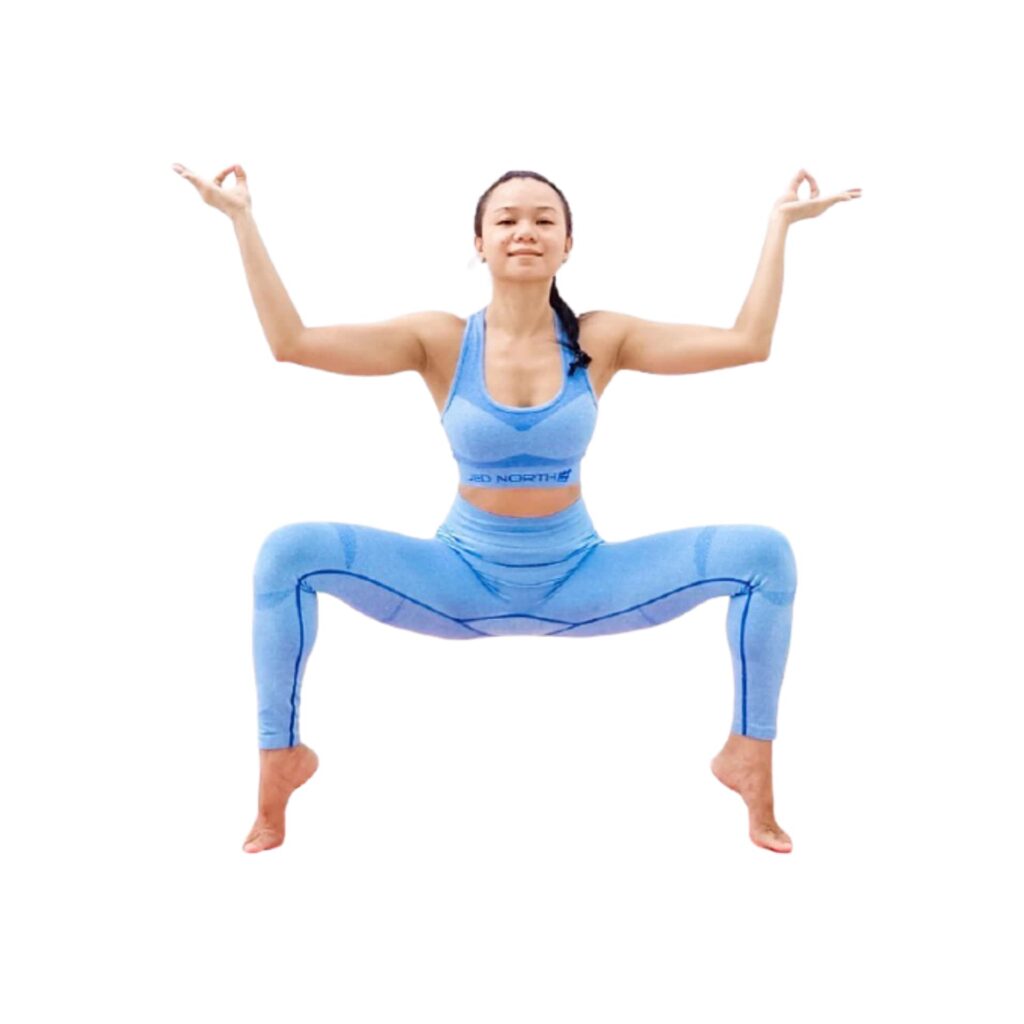
- Start in a broad standing stance. Bend your toes and turn your heel in, so your feet are pointed at an angle of about 45 degrees.
- Bend your knees in the same direction as your toes, and lower your hips down towards the height of your knees.
- Raise your arms at shoulder height and bend your elbows so that your fingers are facing the sky. Extend your fingers and activate the muscles on your back.
- Attach your core muscles and pull your tailbone towards the floor. Keep your spine long.
- Stay here for 30 seconds to a minute, then release.
Follow-up poses after Warrior II (Virabhadrasana II)
- Utthita parsvakonasana
- Viparita Virabhadrasana
- Trikonasana
1. Utthita parsvakonasana

- Start in Warrior II (Virabhadrasana II) keep your right foot forward.
- Extending your right arm to the top of your mat, extending through the sides of your torso. Whenever you can reach, move your right hand down and the left hand toward the ceiling, both palms are on the left side of your mat.
- Pull both shoulders away from your ears. Square your shoulders to the left side of your mat.
- Hold for 3-5 breaths, then return to Warrior II (Virabhadrasana II) and release. Repeat on the other side.
2. Viparita Virabhadrasana
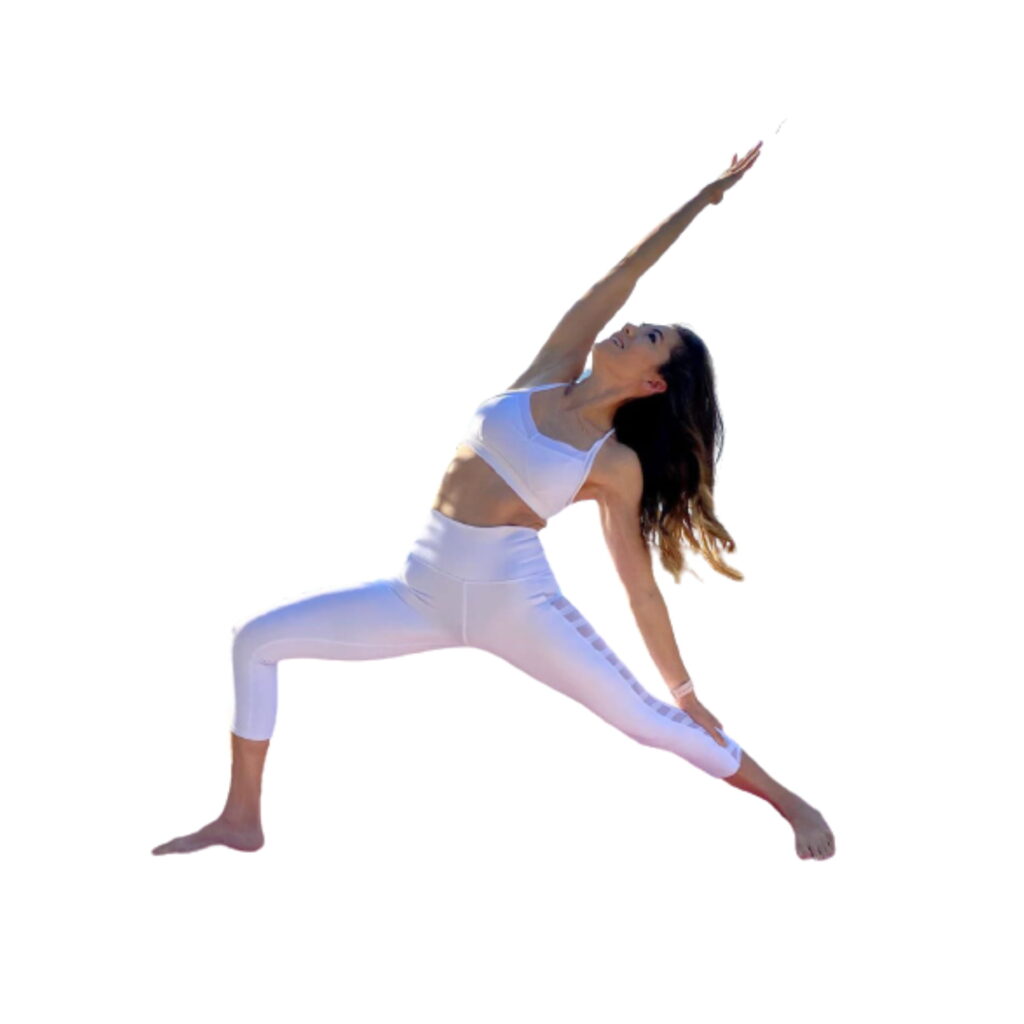
- Starting in Warrior II (Virabhadrasana II) with a right knee bend, bend the palm of your right hand to face the roof.
- As you breathe, raise your right arm to the ceiling. At the same time, lower your left hand and slide your left foot down. Think of doing this if both of your sides are in length.
- Bend your shoulders backward and pat your lower ribs, slightly entangling your core muscles. Elevate your chest as soon as you come back into the soft back. Look at your raised hand, or with a neck or balance problem, try to stare at your hind leg.
- Stay in the posture for 5 breaths.
- Return to Warrior II (Virabhadrasana II) after coming back.
- Repeat on the other side.















